Sales & Marketing Effectiveness Blog Prevent ‘A’ Player Turnover
Tags:
This post will explore why all turnover is not created equal. Measuring sales turnover as a percentage can be misleading. A lower percentage isn’t always better.  Yet turnover is probably the most measured sales metric. HR, sales leaders, and Sales o ps all measure it.Â
ps all measure it.Â
Instead of focusing on an overall turnover percentage, focus on retaining ‘A’ players.  Many sales organizations are proud that they have a low turnover metric. But they are retaining the wrong people.Â
Â
Want to retain 100% of your 'A' players? Download the Top 10 Ways to Prevent ‘A’ Player Turnover Checklist. Print it out and put it on your desk.
Â
The first step in preventing 'A' Player turnover is properly identifying 'A' Players. This is not as easy as many think. Here’s an example:
Top Territory Todd:
Todd has exceeded quota the past 5 years. His quota is approximately the same as everyone else. Yet he has 3x the average territory potential in his patch. He has some of the largest current customers. Prospects fall into his lap with little effort. His boss does not want to split his territory. Why mess with a good thing? Todd hasn’t needed to be a student of the game. He has made boatloads of cash and played golf on Friday afternoon for years. Why spend time sharpening the saw? Because of this, Todd isn’t extremely competent on relevant sales skills. Is Todd an 'A' Player? Many would think so based solely on his results. But place him in an equal territory and watch him flounder.Â
Newbie Ned:
Ned has been on your team for 9 months. He impressed everyone during the hiring process. He was diligent during onboarding. His activity is through the roof. He is teaching others of the team new skills he learned in previous roles. Yet, Ned’s results are average for his tenure group. Ned was given the smallest territory and worst customers. Why? His Sales Manager didn’t want to rock the boat. He doesn’t feel Ned knows the product or industry well enough to approach large customers. He is holding Ned back.   Ned walks into the Sales Manager’s office and resigns. The Sales Manager looks at Ned's revenue numbers and doesn’t bat an eye. Once Ned is gone, the Sales Managers labels Ned a ‘bad hire’.Â
What would have happened if Ned was given Todd’s territory? Odds are, his revenue would have skyrocketed. He possesses better hunter competencies and works much harder. In the long run Ned would have significantly out produced Todd. But the Sales Manager was focused on the next 30 days.
The Sales Manager in this scenario missed his number by 4% last year. If he gave Ned a fighting chance he would have hit the number. Backfilling Ned’s territory led to a $1.2 million year-over-year territory revenue deficit. That revenue would have bridged the gap.Â
Â
This is a common issue. So how do you solve it?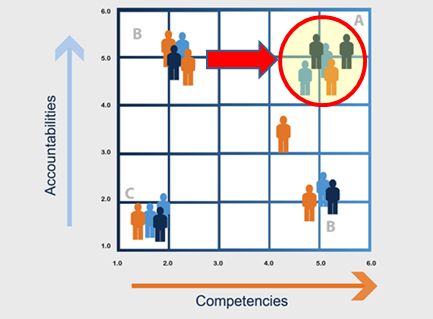
- Identify ‘A’ Players - determine your team’s level of competency. Add in performance against accountabilities and plot your team on the 'A' player matrix.
-
Assess whether your performance conditions are conducive to 'A' player success.
- Territory & Quota – do 'A' players have a fair shot to hit their number?
- Leads – are you providing them enough quality leads?
- Is your Go-to-Market Strategy relevant – dated sales channels will frustrate customers. Frustrated customers lead to frustrated A players.
- Reduce non-selling time – admin doesn’t make any sales person money. Minimize it!
- Comp – are 'A' players paid fairly for their efforts?
- Execute the 10 Sales Leadership Ideas in the tool - ‘A’ players won’t settle for an average leader. They need a boss that will remove obstacles, provide candid feedback, and challenge them. ‘A’ players want value from their boss, not noise. Nothing will lead to ‘A’ player turnover faster than poor sales leadership.

http://dealernetservicesonline.biz
Things Are Changing - But Are Things Really Changing With Them?
Tags:"And Round And Round We Go"
Â
 There seems to be a great deal of commonality and consensus in the disconnect between the Sales Department and The BDC Department just to name two and problems within both. It almost seems to be the rule and not the exception that management has not fully embraced the impact of recent changes among them being Digital Marketing is having on the marketplace today.
There seems to be a great deal of commonality and consensus in the disconnect between the Sales Department and The BDC Department just to name two and problems within both. It almost seems to be the rule and not the exception that management has not fully embraced the impact of recent changes among them being Digital Marketing is having on the marketplace today.
The BDC department is too often viewed as a bunch of internet geeks that have no conception of the sales process and should not be talking to customers. The BDC often looks at the Sales Department as a bunch of knuckle dragging egotistical Neanderthals that inhibits them from fulfilling their mandate.
This among other organizational problems plaguing Dealers today is an age old problem but one that has been exacerbated by the rapid and momentous changes that are taking the Automotive Industry by storm.
I know that for Digital Marketing this will change if not for any reason than the younger generation who grew up in this technological world and who have been entering the Automotive Marketplace have already embrace it before they even enter the job market. But what is to be done now?
How long are dealers willing to wait before they take charge and make all the changes necessary to correct the problems that are plaguing them? For instance, when it takes days or a week or longer of calls and conversations just get the manager to give approval to the BDC or the BDC to make the call just to give approval to have their data polled-you know you have a problem.
We all know that this is just one of many issues facing many dealers. So when are they going to realize that they need to have a qualified professional from the outside looking in to pinpoint the problems and provide the solutions necessary to correct them.
Once they make that realization and retain someone and after discussing and agreeing on what is broken and how it may be resolved, you need to hope that something is actually done to implement those solutions unless you are directly involved in the implementation of those changes.
You may have the plan that could put them on the path to sustained and continued growth but if the infrastructure is not in place or put in place to utilize them- all has been for naught.
How have you made an impact on your clients in resolving these types of issues and have seen them come to fruition?
Posted by Bill Cosgrove
DealerNet Services
 Understanding the “why buy†motivations in potential buyers can have a major influence on the methods your dealership may use to entice these buyers to buy from you and not from the dealership down the street.
Understanding the “why buy†motivations in potential buyers can have a major influence on the methods your dealership may use to entice these buyers to buy from you and not from the dealership down the street.
Recently I viewed a number of YouTube videos presented by Simon Senek, a motivational speaker, Columbia professor of communications and author of 'The Golden Circle' and 'Start with Why'.
Â
Senek speaks about how most companies normally approach the act of sales and marketing from an 'outside-in' perspective.
Â
Let’s use a dealership as an example:
•    What they do   = We sell cars
•    How they do   = We employ floor salespeople and list vehicles onlineÂ
•    Why they do    = We do the same as our competitors
Senek maintains that great companies - and he uses Apple as his example - operate in exactly the opposite way. In other words, they work from the 'inside-out' - for them the sequence of events will be:
•    What they do = In everything we do, we challenge the status quo
•    How they do  = We make our products user-friendly, cute to own and attractive
•    Why they do  = Want to buy one?
In Senek’s world, his belief is that companies should think in terms of having a goal of “doing business with people who believe what you believeâ€.
When you apply this to a normal customer/dealership relationship it is a process that may not find universal acclaim, as standard practice would be to sell potential buyers what you have - such as that well-priced, high-spec demonstrator. It would not be to sell to potential customers who believe what you believe!Â
Bear with me, as I know it also was a tad confusing before I got my head around the argument when I attempted to apply this thought process to a dealership setting. To assist the simplification of this process for a typical dealership setting I was able to draw on the work recently conducted by Cobalt’s corporate storyteller, Jade Makana, in her recent e-book entitled 'Defining Your Dealership Why'. Â
A comparative approach to dealership marketing outlined by Makana may be:
Dealer A who adopts a rational thought processes to marketing
Â
* We sell the car you want
Â
* Our cars are on sale
Â
* We offer zero percent financing
Dealer B who adopts a why buy feeling approach to marketing
Â
* Come in and enjoy a pressure free environment at XYZ Motors as our consultants are paid on salary not commissions. Why? Because we believe pressure belongs in your tyres not your car buying experience, or
Â
* Come buy a car from XYZ Motors and get free tyres for life. Why? Because we believe in lasting relationships, not drive-by sales. We want to know your name, not just your credit card number, or
Â
* Come buy a car from XYZ Motors, where $100 of every car sale goes to Child Cancer. Why? We support worthy charities in the hope that you will do the same.
These extreme examples listed above are used for illustration purposes. Dealer B gives up trying to concentrate on commodity features in favour of concentrating on a value proposition - what he believes and why he believes in it, these are his core value propositions.Â
He does not concentrate on price or models as they are not a why. For Dealer B it becomes second nature for him to strut his core beliefs and incorporate these into his everyday business. It is what Jade Makana refers to as "a dealer walking the why, will create customers for lifeâ€.
To understand why we buy with our feelings we need to look at our brain. The brain is made up of two major parts: the neocortex and the limbic brain. The neocortex or the “what†brain processes rational thought or facts. This is the logical part of the brain, but it does not drive behaviour.Â
The limbic brain or the “why†brain is where all our feelings and instincts are stored - it is the driver of behaviour. Hence, potential customers buy with their feelings.
When you think seriously about the why in marketing to potential customers it is far easier to differentiate yourself from your competitive dealers. Jade Makana demonstrates two US dealer examples as marketing case studies, they are:
Â
* Carter Subaru, based in Seattle capitalise on Subaru’s “why equity†and on the brand's core marketing message of safety and responsibility.
Â
Carter Subaru’s campaign is to plant one tree for every test drive, and to plant three trees for every vehicle purchased - and they proudly promote the fact that, to date, they have planted 70,000 trees!
* Sewell Automotive based in Dallas and headed by Carl Sewell has a simple and revolutionary 'why buy' message. “Do not charge customers for any service you would not charge a friend forâ€.
Â
Sewell dealerships have on-call service reps 24 hours a day, who are known for doing things like showing up at Dallas Airport at midnight to replace a broken key in a customer’s ignition, for free.
Â
The morale of this story in Makana’s opinion is: “Sell a car at rock bottom price and tomorrow they will leave you for the next great deal. Bail someone out of a jam in the middle of the night and you have a customer for lifeâ€. Sewell has expanded his business from 1968 revenue of $10 million to just over $1.5 billion today.
I leave for your perusal the following four dealership examples Cobalt offers as 'why buy' best practice:
Â
www.cartervw.com/AboutUs
www.findlaychevrolet.com/About_Us
www.peoriavw.com/AboutUs
www.sewell.com/web/our_values
Â
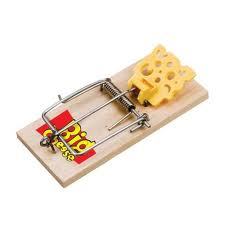 If you have read my blogs “Don’t Fall Into The Trap†or “Take Back Your Marketing†or the many comments I have made concerning this issue, you know that I have been against the large companies commoditizing approach they have been feeding dealer’s- And in particular I am referring to the small and medium size dealers- that you need change your business models and to sell more at a lower price to compete in today’s marketplace.
If you have read my blogs “Don’t Fall Into The Trap†or “Take Back Your Marketing†or the many comments I have made concerning this issue, you know that I have been against the large companies commoditizing approach they have been feeding dealer’s- And in particular I am referring to the small and medium size dealers- that you need change your business models and to sell more at a lower price to compete in today’s marketplace.
Â
I am now starting to see a trend that is showing support for what I have been saying for a long time. I just read a white paper put out by firstLook which states that used car dealers and private party sales in April climbed 0.7 percent vs. year ago to 3,819,127 units. vs. 3,792,604,
Â
Total Value of Used Cars sold, however, slipped 5.8 percent to $34.1 billion compared to last year's $36.2 billion because of lower transaction prices.
Â
Transaction prices across all three channels were down 6.46 percent to $8,928 from $9,545. (Excludes aftermarket products, taxes, fees, etc.)
Â
“• BuyÂers were kickÂing tires at five or six difÂferÂent dealÂerÂships years ago, and that’s now dropped to 1.8 in-person store visÂits.
Â
• As the recesÂsion slammed down hard, used car supply waned and commoditizing of the used car industry was born. Many dealers have sold inventory as cheap as possible, turning them as fast as possible for tiny marÂgins, then ran back to the aucÂtions to scoop more supÂply.
Â
• The “velocity only†approach hasn’t gone so well. Gross profÂits have been eroded.
Â
It doesn’t have to be that way if you can access both the tools and philosophy necessary to turn cars while achievÂing high gross profits.â€
Â
“And anyone can stand in front of a room and tell you to price everything for dirt cheap and it will sell faster. The key is how you can achieve 85% Retail Sales Efficiency while maintaining high gross profits.
Â
Some seemingly “progressive†thinkers have very simply stated that used cars are a commodity. The only way to be successful in today’s market is to sell cars really cheap at 96% of the market, turn them as fast as possible for tiny margins, and run back to the auction to scoop up more. And quite frankly…a lot of people drank that Kool-Aid. The hypothesis being that this approach will, allegedly, increase turn and volume, and with that volume you can make more money. A velocity only approach they call it.
Â
Beyond being a gross oversimplification of the car business, the impact this has on the market is obvious – eroding gross profits. In fact, based on a recent dealer survey, this is the #1 concern for General Managers and Dealer Principals in 2013. “
Â
The bottom line is…not all used cars are commodities, and we need to stop treating them that way. Just like in any retail business there are high margin products and low margin products. The key in the used car business is having the tools and philosophical approach necessary to identify the difference between the two."
Â
Interestingly, a recent CarMax Consumer Study found that only 23% of people rank price as the most important factor in their buying decision. 77% rank VALUE (typically tied to some aspect of quality) as their top criteria.
Â
I remember on one occasion at a dealership I was working at the used car Manager was telling the rep from Auto Trader that he wasn’t happy with the results he was getting. The Rep responded by telling the manager that he needed to lower his prices if he wanted better results.
Â
That preowned manager did not listen to the rep and bucked the trend of lowering prices to compete online. - And guess what- average grosses in his department were much higher than the industry average and his total unit sales were improving. Number one that is why you have a “good†sales staff and “good†finance people for and number two you can always come down in price but I never heard a customer say a price was too low.
Â
You can only add value by competing within your market area all of which can be done with offers in  CPO, service i.e. loaner cars, shuttles; specials; events and by extracting the vast resources you already have to create campaigns and make in house adjustments that will capitalize on those campaigns.
Â
By having the right people that can produce “creative campaigns†and the right staff you can turn the tide and sell the VALUE not the PRICE.Â
Author Bill Cosgrove
DealerNet Services
A Giant Misconception? (Food For Thought During The Cars.com+ Debacle)
Tags: After watching the podcast with Jim Ziegler and Tim Martell about this purportedly growing epidemic of deception and self-serving practices of the giants that historically seem to look out for their interests ahead of their constituencies we must take stockÂ
After watching the podcast with Jim Ziegler and Tim Martell about this purportedly growing epidemic of deception and self-serving practices of the giants that historically seem to look out for their interests ahead of their constituencies we must take stockÂ
Today with the explosion of digital marketing and more giants being created that are affecting the Automotive Industry I wonder if transparency is headed for extinction. The giants of the classified marketing space and now marketing and Dealer services companies who have all but or are attempting to monopolized the the Automotive Industry have dealers thinking that for the moment they have no other option but to pray at the their alter.
I am sure that if there were viable alternatives dealers would be making other choices BUT if we think about there are viable alternatives. There are local classified sites that serve the local communities within a Dealers market area that can do as well or a better job of serving the Dealers. Who came up with the idea of selling customers outside your market area anyway-think about it- The GIANTS.
Dealers in urban areas have population densities that can provide sustainable growth within their market areas and save valuable resources that could be allocated in more productive ways.
The Giants have been conditioning Dealers into thinking that their way is the best and only way. With today’s advances in technology there are much more efficient ways of marketing and operating without the need to constantly be looking over your shoulder for the next knife to be thrown.
This is food for thought that every dealer should ponder. There are plenty of boutique marketers and consultants out there that specialize in their field that are more nimble and have fresher ideas and have the Dealer’s best interest at the top of the list with all ultimately being served much more efficiently and productively.
THINK ABOUT IT
Posted By Bill Cosgrove
DealerNet Services
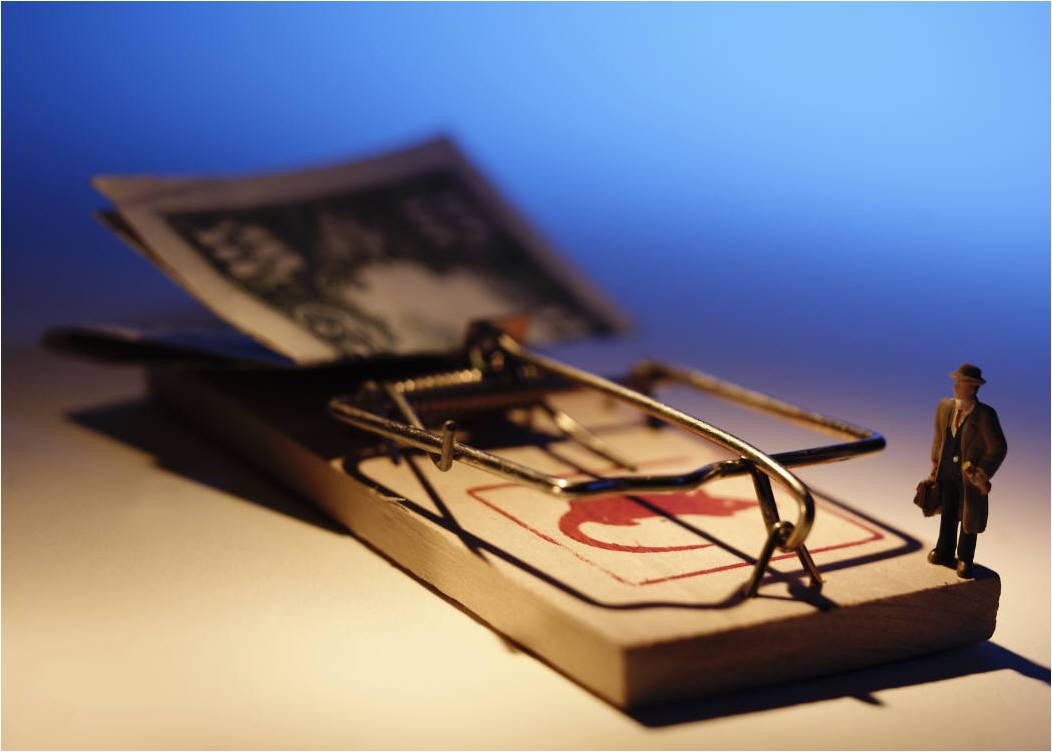 Grow your business within your market area- from within your organization
Grow your business within your market area- from within your organization
Â
The problem I see in the Automotive Industry is that the large corporations, who are trying to take control of the Vertical landscape from B2B wholesaling to the classified car sites to inventory control and marketing, find it easier to market in a one style fits all approach. This may work well for them but it is a trap you don’t want to fall into.
Â
The tighter The Commoditization Trap is on a company or an industry, the more that company must look outside – to its customers and prospects to find, and, more importantly, understand the unique concerns that affect them. Companies must engage their customers to know what adds value for them. If you want to avoid or escape The Commoditization Trap you must find ways to add value (something people are willing to pay for) before the product becomes an issue.
One of the rules of value creation is: if your actions don’t create value, then your actions decrease value. If your sales presentation does not increase the perceived value of your products or services, it decreases the value your customers or prospects perceive they get from you.
Â
You can only add value by competing within your market area which can easily be done by drilling down and extracting the vast resources you already have to create campaigns and make in house adjustments that will capitalize on those campaigns.Â
Author Bill Cosgrove
DealerNet Services
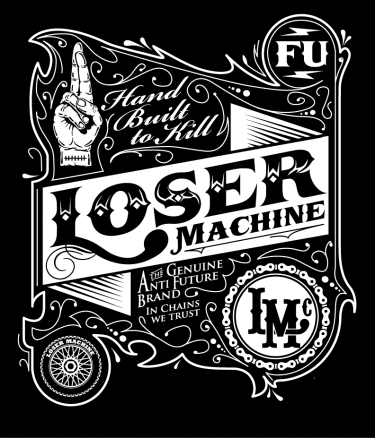 First I want to thank Jim Ziegler and Manny Luna and others for their due dilegence in the Autogate affair that is currently unravelling and have made it possible for me to get some attention on a topic close to my heart.
First I want to thank Jim Ziegler and Manny Luna and others for their due dilegence in the Autogate affair that is currently unravelling and have made it possible for me to get some attention on a topic close to my heart.
I want to take advantage and seize the moment concerning all the controversy surrounding Cars, com among others with hints of more to come.
Why? Because I hope that finally YOU the dealer who is following this mantra will come out of the ether and realize that the medicine that the giant classified Ad and Services Companies have been prescribing Dealers is showing its nasty side effects and is WRONG.
Let’s take a look at some numbers to see just how much these churn and burn marketing strategies can affect Dealers. One side effect of this strategy is that you are always chasing inventory to sell more to make less money – who does that benefit? Â
Another side effect is management and salespeople are working harder to make the same or less money and if you have worked at a dealership in the past few years these guys have more responsibilities than ever before. This leaves the possibility of losing conversions and inventory purchasing errors. Plus, you are probably spending more money to drive that traffic to churn those cars and -Â who do you think benefits from that.
Another side effect is that you start taxing you facilities ability to do the MPI (Multipoint Inspections) reconditioning e.t. and unless you spend more to fill the gap you chance having other problems with Inventory presentation. WHO DO YOU THINK THIS AFFECTS?
Sure there are dealers that sell for one take or leave it price and do well but how long do you think it would be when this becomes the rule and not the exception. There will be more consolidation and small and medium size dealers will be put out of business by the churn and burn stores that need to gobble up more and more market area to survive. And who do you think this will benefit? –
I am not a conspiracy theorist by you can’t help but see the correlation here especially with what has been surfacing over the past couple of weeks.
According to FirstLook, total sales in April climbed 0.7 percent vs. year ago to 3,819,127 units. vs. 3,792,604, transaction prices across all three channels were down 6.46 percent to $8,928 from $9,545 in 2012 excluding aftermarket product.
So let’s do the math.
$9,545.00- $8,928.00 = $617.00. Let’s say on the average you sell 50 pre-owned units per month. Let’s say you could have sold just 25 of those 50 units and grossed $309.00 more per unit.
$309.00
X 25 units
$7,725.00
Let’s say that you could have made another $800.00 dollars per unit on the back end.
$800.00
X 25
$20,000.00 Let’s add it up
Â
You just made at $27,725.00 more in gross that in a year adds up to $332,700.00 plus what you have just saved on all the added costs of churning and burning units and the costs of potential Presentation of inventory and inventory purchasing errors, losing conversions in the rush to churn e.t. in the rush to churn.
Â
Let’s say that you sell an additional 10 cars a month with the churn and burn method. Using $1200.00 as an average gross and gross $800.00 on the back end you would have grossed $20,000.00 Dollars or $240,000.00.
Â
$332,700.00
$240,000.00
($92,000.00)
Â
You grossed ($92,000.00) less plus all the additional overhead it took to Market, Buy, Prep and sell them. -Who is does this benefit?
If you need to go outside your market area to gain market share and have the population density within you geographic market area for growth YOU need to look inside not outside and fix the problems  within- Who will benefit from this?
If you set your goal of growing within your market area the benefits are greater and put those additional resources you are using to draw in people from outside your market area you will be better for it. People who purchase from outside your market are price buyers only because you have no value to offer them.
So think about it and do what you think is the right path for you to take. For most of you-you will realize the only ones that are getting feed are the Dragons.
One of the rules of value creation is: if your actions don’t create value, then your actions decrease value. If your sales or marketing presentation does not increase the perceived value of your products or services, it decreases the value your customers or prospects perceive they get from you.
Author Bill Cogrove
DealerNet Services
AFTER THE BAD MEDICINE- WILL YOU BE READY FOR THE TOUGH MEDICINE?
Tags:
 If you the Dealer think you could or should be doing better, you need an experienced independent Consultant.
If you the Dealer think you could or should be doing better, you need an experienced independent Consultant.
Â
If you the Marketing Company are putting your reputation on the line and driving traffic to a Dealer who is not prepared to sell them you need  an Independent Consultant in there first.
Â
Remember you as the Dealer or Marketer are in the Driver’s Seat So Take the Wheel -When you’re going straight ahead-you get there faster-and safer so take control and win the race. If you are not committed and prepared 1000% It is time to GET OFF THE TRACK.
The blame always lies with you. Before you blame your vendor or (presumably)Â competent staff- look in the mirror- maybe they are not the incompetent ones.
Â
Customer Acquisition Cost (CAC) is determined by customer visits. Your bottom line lives or dies by IT- BOTTOM LINE. Â And it is crutical to design your marketing campaigns and structure your staff to do what works best for YOU at YOUR location in YOUR geographic area.
Â
If you're not Marketing to the Latino/Hispanic market-YOUR LOSING A LOT OF MONEY. The Latino/Hispanic population of the US is the 20th largest economy in the world so is not to be ignored. Please go to the more section above and follow the link "ENGAGING THE US LATINO MARKET" at Autospeak (Engaging the US Latino Market) to get a better understanding of impact this market segment represents.
Â
Â
 If someone isn't willing to tell you this to your face- Get another Consultant.
  If you didn't already know all of this -YOU BETTER GET A CONSULTANT
Â
    Bad Medicine-Who's Really Getting Better?                       Posted By Bill Cosgrove   DealerNetServices
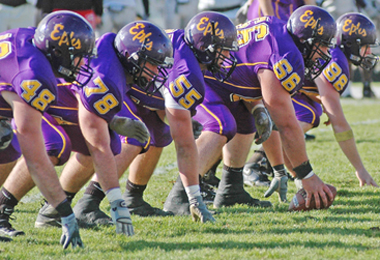
Here are some stats that Most of us already know and most Dealer Principles and GMs may already know. But let’s give it another read because this is important to your business.
Not all buyers use the same criteria to choose a dealer or are influenced by the same dealer experience and sales processes.
According to the Foresight Research 2013 Dealership Report, Taken from UCN News, based on a study of 7,543 recent U.S. new car and truck buyers, experience with a brand drives most purchases.
While 17 different automotive marketing communication channels are analyzed in this study, none are more influential to the purchase decisions of new car and truck buyers than the dealership experience with the exception of prior brand experience. Forty-nine percent of all buyers this past year report that their dealership experience was highly influential to their decision to purchase the vehicle they did.Â
The average new-vehicle buyer today is older (nearly half are over age 55). They are also wealthier and experienced with the buying process. Dealer reputation and relationships are key to this group.
Younger buyers (many of them first-time buyers) bring a narrower set of expectations into their buying process. These buyers want and need dealer assistance, but one out of four say their dealership experience took too long.
Buyers aged 35-54 (representing 37 percent of current buyers) reflect a mixture of their younger and older counterparts. Like younger buyers, they are very concerned with getting a good price/deal, and financing options. Yet like older buyers,
they have high expectations of their dealer experience.
So let’s think about this. This means that the people on the front lines and by this I mean the salespeople, including those in the BDC department, Service Writers, Parts and Body Shop Departments. Now why did I just refer to all these people as salespeople?
Because they all better be. These are the people that are selling you, your services and products and if they don’t know how to sell and how to treat people-your losing a great deal of business.
So why do a lot of you think that you can get these people on the cheap and expect great results. You pay a lot for your marketing and other vendors services and hopefully they are doing the right things.
But these employees I just mentioned are your most valuable asset and you are not going to get or have the right people on the cheap. I showed in one of my last posts a dealer who was paying top dollar and getting top results. These stats just gave me the opportunity to maybe shed more light on my mission to prove my point.
You can hire consultants to train, train and do more training and give people all the tools in the world to do a job but if you don’t have the right people your just wasting your money. And by the way what are your managers doing?
You need consultants who know how to get the right people in right the positions first Which means consultants who have proven themselves on the front lines and in the trenches who can find right people you need. And again, what are your managers doing?
If you need to hire consultants, (And again what are your managers doing), find one who is going to weed out all the non-performers and who is hire by and who is looking out for you the owner and not the management that may be the root of
your problems.
A lot of good salespeople and managers have already left the Automotive Industry because they can perform in any Commission Sales Industry and are going where they can be rewarded for their talent.
There are those who would like to commoditize the Industry and have store clerks waiting on people. But I can tell you that if this happens there will no longer be room for the Small and Medium Size Franchise Dealer.
By having the right people you don’t need to train them because they’re professionals and are driven to perform. So if you take all that money you pay to train and get no return from and put the right people (Including Management) on the front lines- you will not only save most of the money you spend on consultants and realize that the ones on the front lines are your real ROI.
Author Bill Cosgrove
http://dealernetservicesonline.biz
 I cut my teeth selling at an early age selling door to door. From delivering newspapers to Fuller Brush to Cash is Best, for which Ted Turner was a fugitive from the US holding offshore on his yacht in international waters for purporting a pyramid scheme, to selling the original wind up fire and burglar alarms for the home.
I cut my teeth selling at an early age selling door to door. From delivering newspapers to Fuller Brush to Cash is Best, for which Ted Turner was a fugitive from the US holding offshore on his yacht in international waters for purporting a pyramid scheme, to selling the original wind up fire and burglar alarms for the home.
After having had my foot caught in the door many times I eventually found my way into Automobile sales. I was so excited to have this opportunity because here were people coming to me looking to buy what I had to sell.
I felt like a kid is a candy store and never looked back. This business allowed me to experience owning my own businesses but I always came back to what I always loved.
When I think of all the advice available to train a good salesperson I think of why salespeople would not all be superstars. After years of being around commissioned sales and salespeople both in and out of the Automotive industry it is apparent to me that the art of selling (and it is an art) is a talent that few people ever master.
I have seen so many techniques that salespeople use to make a sale that works very well for them but would never work for me. As a matter of fact, Some I could not even fathom how they even made so many sales with their “Style†of selling but it worked for them.
What worked for them would never work for me or you.. You can only observe and take those observations and find a “Style†that works for you and make it your own.
This “Style†for the fortunate ones something that comes naturally making selling for them almost effortless. Sales must be looked at as a challenge- the more difficult the sales is to make, the more satisfaction you get from the experience.
That challenge is something that the truly gifted crave, need and look forward to each and every day in every aspect of their lives. It is like a game of chess that is played and each move determines an eventual outcome that a true salesperson is driven to win by reading each move of the opponent before it is even made.
We are all actors on a stage in our journey through this wonderful life but only a few can mold and manipulate the parts they play.
There is and always has been a misunderstanding or maybe even a lack of respect for these truly gifted people. Only a secure, talented and gifted manager who driven to hit that next level knows that he must let these salespeople work their craft using their own “style†to make the relationship rewarding and successful.
These are the type of people that one needs to make a business truly successful. The ones who are in it not just for the money but because they are driven to succeed. Don’t settle for mediocrity. Constantly be looking for the people that will take, maintain and always be looking for that next rush that only these people get from their work.
If you have all the tools and have not found your “Style†as an owner, manager or salesperson unfortunately you probably never will. But if you know all this and never stop looking to surround yourself with these truly talented people you will have your battle plan and will eventually win the war.
Author Bill Cosgrove
http://dealernetservicesonline.biz
Â
CALENDAR
CATEGORIES
TAGS
TWITTER POSTS
CALENDAR
- powered by
- One Big Broadcast
- creative by
- WebStager
© 2025 One Big Broadcast | All rights reserved
